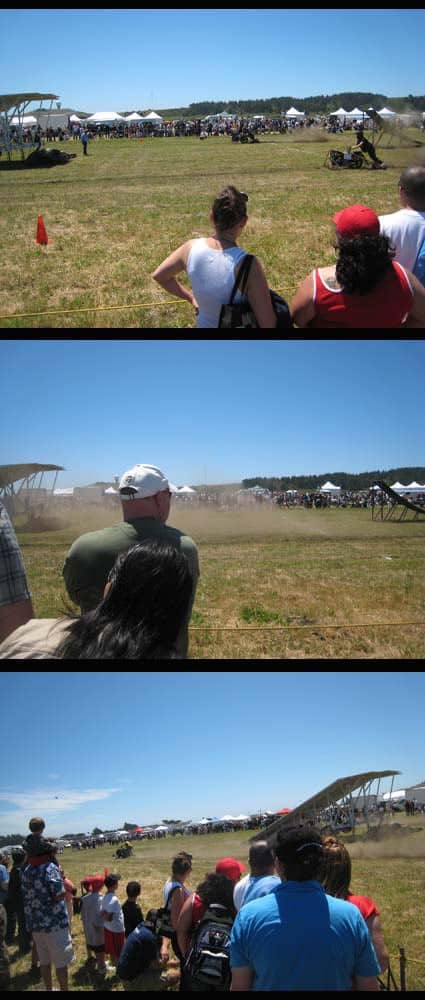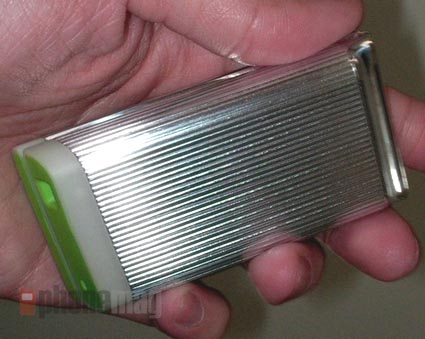ChittahChattah Quickies
Volkswagen turns off Blackberry email after work hours [BBC News] – Technology changes work boundaries and work patterns. Will a technological solution work? The article suggests that they will stop people from receiving email after hours, but will they stop people from sending email after hours? Is the demand for after hours work coming through the email messages or are there other pressures? So many questions about this one!
Volkswagen has agreed to stop its Blackberry servers sending emails to some of its employees when they are off-shift. The carmaker confirmed it made the move earlier this year following complaints that staff’s work and home lives were becoming blurred. Under the arrangement servers stop routing emails 30 minutes after the end of employees’ shifts, and then start again 30 minutes before they return to work. “It’s bad for the individual worker’s performance being online and available 24-7. You do need downtime, you do need periods in which you can actually reflect on something without needing instantaneously to give a reaction,” said Will Hutton, chair of the Big Innovation Centre at The Work Foundation.
Manischewitz Creates Kosher Food for Gentiles [NYT] – Having grown up with the traditional meaning of the brand, I find this a bit challenging but am intrigued by the potential to reframe and expand their story.
“Instead of taking the older products we have out of the kosher aisle and forcing them into the main aisle, we’re creating new products that have a place in the main aisle,” said Alain Bankier. A new line of broths, for example, is being shelved in many supermarkets not with most Manischewitz items but rather in the soup aisle. A new line of Manischewitz gravies also will be stocked with other mainstream brands. Manischewitz ads traditionally have emphasized Judaism, showing yarmulke-wearing celebrants at, say, a Seder. But new ads, by Joseph Jacobs Advertising in New York, the Manischewitz agency for more than three decades, take a decidedly more secular approach. “Don’t miss the boat,” says a print ad for beef gravy, which shows it being poured from a sauce boat onto mashed potatoes – no shofar or Star of David in sight. New ads “make little if any reference to any Jewish holiday,” said Elie Rosenfeld, chief executive of Joseph Jacobs. “There’s a tagline we use, ‘Bringing families to the table since 1888,’ and we want to be part of that family with you whether it’s Rosh Hashana, Hanukkah or Easter.”
Samoa Sacrifices a Day for Its Future [NYT] – A massive change in infrastructure and function, revealing time (or at least our documentation of it) to be more arbitrary than fixed.
The Pacific island nation of Samoa and its even tinier neighbor Tokelau are skipping Friday this week, jumping westward in time across the international date line and into the shifting economic balance of the 21st century. The time change is meant to align Samoa with its Asian trading partners; it moves the islands’ work days further from the United States, which dominated its economy in the past. In this giant-step version of daylight saving time, the island’s 186,000 citizens, and the 1,500 who live in Tokelau, will go to sleep on Thursday and wake up on Saturday. The government has decreed that those who miss a day of work on Friday will be paid all the same.
Portable Cathedrals [Domus] – Dan Hill’s epic articulate review of the Nokia N9 isn’t a gadget review, it’s a (tl;dr) cultural critique of design, where culture is within the producer organizations as much as – if not more than – the consumer society.
Yet the skeuomorphic nonsense that incomprehensibly pervades apps like Apple’s own Contacts, Calendar, iBooks, GameCenter, Find My Friends et al-all awkward faux-leather, wood and paper stylings-is is of such questionable “taste” it threatens to damage the overall harmony of iOS with its discordant notes. You cannot derive value from the idle suggestion of such textures on screen; they are physical properties and should be experienced as such, or not at all. Yet Apple’s design team will not explore those physical properties, merely sublimating their desire for such qualities into a picture of leather, a picture of wood. It recalls Marcel Duchamp’s critique of ‘retinal art’ i.e. intended only to please the eye.
For a Corn Chip Maker, the New Spokesman Is the Product Itself [NYT] – The argot of advertising is hilarious and depressing all at once. Zany and authentic spokesbag?
At the Fiesta Bowl on Monday, the game’s sponsor, Tostitos, will have a new endorser – a “spokesbag” puppet in the form of a chip bag with arms, a mouth and a generous dollop of swagger – to humorously convey the message that it is the tortilla chip brand that enlivens social gatherings. The new life-of-the-party campaign resurrects the top-selling snack’s 1990s theme. ” ‘Tostitos Knows How to Party’ means we are returning to our roots,” said Janelle Anderson, the brand’s senior director for marketing. Tostitos returned to the ’90s theme after marketing research over the last year found that its customers wanted reasons to celebrate and have fun in economically lean times. Tostitos chose a zany character “to get the message across and make it authentic,” said Ms. Anderson. “We wanted something that was magnetic, fun and approachable.” The brand’s new advertising agency, TBWA/Chiat/Day, decided to “bring personality to the brand, and, in one of those rare cases, have the actual product be the actual spokesperson,” said Brett Craig, the group’s creative director for Tostitos. Working with Legacy Effects, a Los Angeles special effects company, the agency developed the hand-manipulated puppet with movable parts and special effects to convey energy, said Mr. Craig.

 Lawnmower Races, Half Moon Bay, California
Lawnmower Races, Half Moon Bay, California